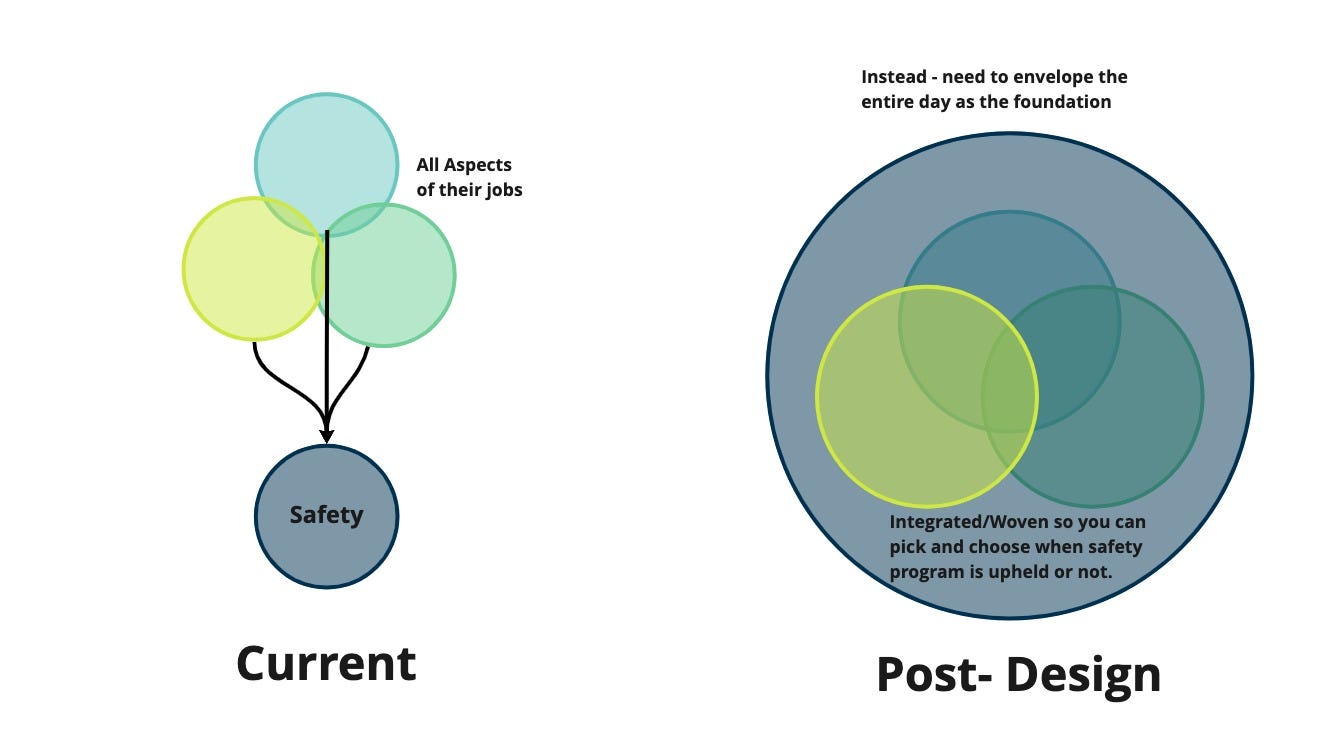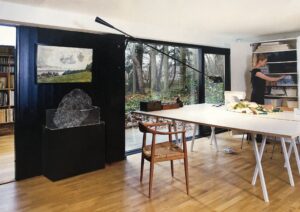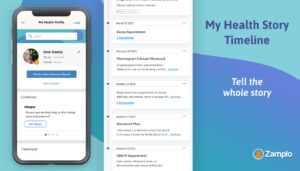HeadsUp
Jacob Dorscht
We know too much to still have workers being injured, made sick, or killed on the job. Unfortunately the needs of managers and companies are the priorities for all Health and Safety Tools currently available while the largest user group in the most danger are an afterthought. This Mobile AR Design aims to protect workers through a first if its kind, truly worker-centred project and daily planning tool.

Project Summary
In the Health and Safety world, a significant amount of resources are invested into engineered and administrative controls to prevent incidents but they only go so far. We know that behavioural-based safety is the real stop gap in preventing workplace incidents.
The goal of this project is to find an innovative method of leveraging technology to shift behaviour and help Workers in high-risk industries integrate safety into the everyday fibre of their workplaces.
This is a challenging context space to dig into as it is impacted by Patriarchy’s impact on men and themes of toxic masculinity, Capitalism and Production being valued above all, Classism and how we as a society value labour and the bodies that do it, as well as the power dynamics of the workplace and its impacts on trust and self perception.
The Mobile App is designed with logic and technologies that can be implemented and built immediately while the Heads Up Display Safety Glasses (HUD Glasses) inspire where would could be in the near future.
Key Project Details
- My Role: Designer
- Project Length: Sept 2021 — April 2022
- Tools Used: Figma, Miro, Qualtrix, Canva, Adobe Photoshop, Adobe Illustrator, Adobe Premiere Pro, Adobe After Effects, Rotato, Blender
- Methods Used: Sketching, mapping, personas, SWOTS, body storming, paper prototypes, clickable prototypes, wizard of oz, workshops, video prototyping, wireframing, app architecture mapping, etc.
Concept Video
Design Components:
The Mobile app pairs with Heads Up Display Safety glasses to ensure workers have all the tools they need to plan ahead and pivot when things change.
The mobile app consists of:
- The most important and urgent information up front and centre on the Dashboard
- Job Planning Tool that reduces redundancies, gives them more for less, and renders all their documents in a format that their bosses and clients will recognize.
- In App Messaging that allows for text and Video chats with realtime video notes with augmented reality.
- A digital Swiss army knife of useful tools for everyday convenience
- Professional and Social Profile page to highlight their career highlights, best work, training, resume, and endorsements from happy clients and supervisors.

The workflow planner is one large conditional form that responds to users’ input and only shows what they need to complete based on the tasks, tools, equipment, and hazards they enter.

Currently, most forms have large amounts of redundant information to collect. For example, in a workday, you may record the permit number, crew names, muster locations, and vehicle information on a dozen forms. The workflow planner ensures you only enter information once.
The peak experience would be seeing all these formal documents just appear in a fraction of the effort and time, with the added benefit of also completing non-safety-related forms such as invoices, expense reports, materials estimations, tools lists, etc.
A well planned job is a safe job.

Additionally, if this becomes their main way to communicate on the job then they will visit the app more and in turn be more likely to engage with tasks and job planning.
A well connected and communicating team is a safe team.

The tools are the cherry on top which help build a positive association and a net value add to their day.

Blue collared workers don’t have the same access to professional-grade networking and planning tools.
The pivot to change the employee profile to “My Profile” is a switch from collecting information to contact and manage our employees to collecting your information, job portfolio, endorsements from happy customers and managers, and tracking the training and certificates which back up that they know what they are doing.
Most workers you talk to will have a smartphone with 1000s of photos documenting the work they are proud of. But they have no way to display them. The Profile changes that. They can share a link where all the information they curate can be rendered in a browser as a one-pager portfolio page for potential employers on contracts.




If the app is the planning tool then the glasses are the “this wasn’t in the plan” tool.
Anyone who makes a plan knows they never go exactly as we thought. Unavoidably, the unexpected always creeps up. The HUD glasses scan the environment of the workers and identify when plans are shifting, when hazards arise, and notify the worker to update the plan.
Examples could be identifying the worker is at a height and needs a fall protection plan and suggests creating a fall plan, assigning it to a crew member on the ground and asking them to get the worker the necessary gear. The idea is to remove as many barriers as possible for why they would continue to work without the necessary safe work plans and quickly get them back on track.
Context Space:

The current comparative solutions serve two primary user groups, Safety Professionals and Contractors/Managers.
Safety Professionals are using Safety Management Software that has mobile companion apps for workers to complete daily documentation for proof of legislative requirements. Apps that are safety focused are still designed with the needs and priorities of the Safety Professional in mind and not the boots on the ground workers.
Additionally, there are mobile apps that target Contractors/Managers for job planning, invoicing and basic project management.
There is a gap in the “market” for tools for the everyday worker to manage and coordinate as a team to properly plan jobs and complete safety documentation in a method that addresses their pain points.

Getting to Know the Users:
The biggest area of exploration was understanding who the users are, what they value, what impacts them, and where they are being underserved. The goal was to get to the bottom of why we are still seeing fatalities, injuries, and illness on the rise given all the resources, knowledge and effort that has gone into Health and Safety.
These design artifacts are the result of interviews, surveys, and secondary research crawling through social media groups and online web forums.















User Stories: The current context they work in everyday.

This comment exposed why workers don’t care, because they think safety is in opposition to what they value. They think it is patronizing and demeaning. They believe formal safety programs are created for the benefit of the company and not for the worker.
Why focus on Behavioural?
Currently, the behavioural and social relationship to safety is it is an entity outside of the worker’s actual job scope and imposed by the bosses.
A focus on why that is the case with behavioural safety and designing to integrate it would be a game-changer for reducing the rate of workplace tragedies.

See More Documentation:
Click below to read the full Medium article case study:




